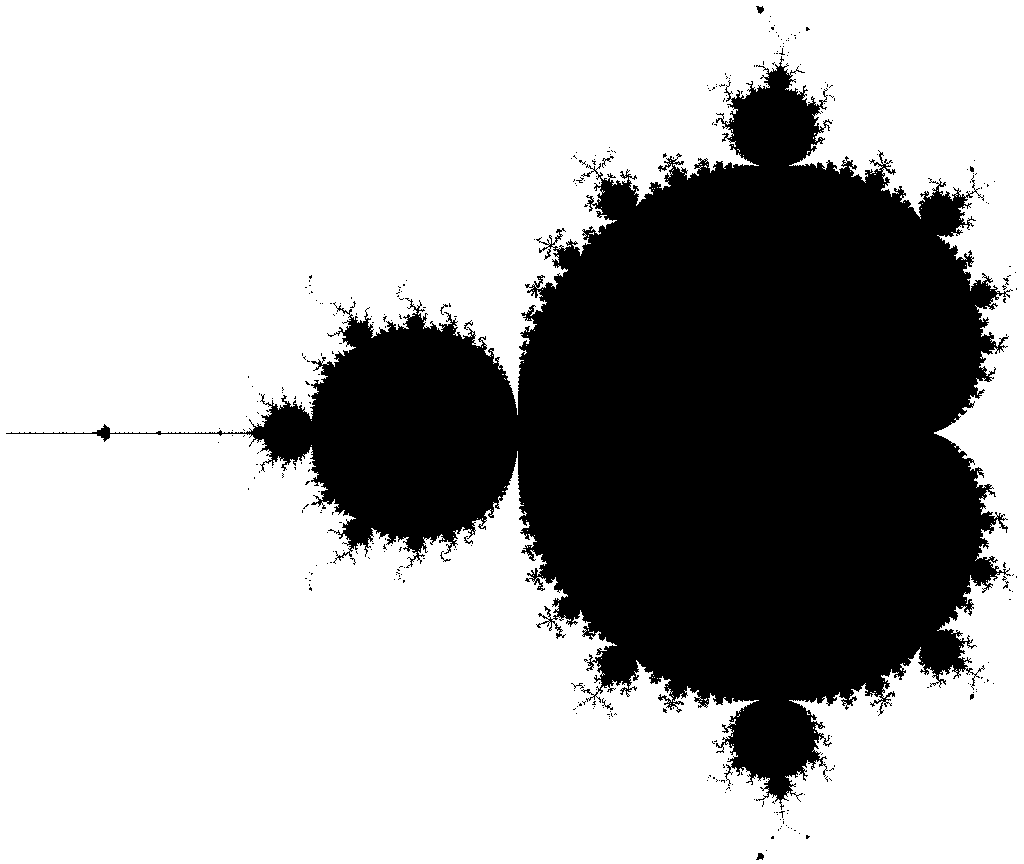

The convex regular 4-polytopes are the four-dimensional analogs of the Platonic solids. It should be noted that the Jenn3D program also uses this projection to depict a variety of polytopes (using polygonal rendering, not distance estimated ray marching). For a very thorough and graphical introduction to stereographic projection of higher-dimensional polytopes, see this great movie: Dimensions.

The technique Knighty used to create a 3D projection, was to place the polychoron boundary on a 3-sphere, and then stereographically project the 3-sphere surface onto a 3-dimensional space. Ideally, a proper perspective projective would be preferable, but this seems to be complicatated with distance estimation techniques. Another way would be to project the shadow of a 4D object onto a 3D space.

The 4D Quaternion Julia, one of the first distance estimated fractals, simply showed 3D slices of 4D space. There are several ways to depict four dimensional structures. In this post, I’ll show some images of a subset of these, the convex regular polychora. Shortly after, Knighty really raised the bar by finding a distance estimator for four dimensional polytopes. My last post mentioned some scripts that Knighty (a Fractal Forums member) made for distance estimated rendering of many types of polyhedra, including the Platonic solids. Here, the coloring scheme does a decent job for low iteration counts, but for higher iterations the images become messy, so for pure aestethic purposes there are probably better coloring schemes around.

I also tested the coloring scheme on Samuel Monnier’s Ducks fractal: The zeroes are visualized as peaks for better graphical clarity. Usually Mandelbrot visualizations focus on coloring the outside of the set, but since the exterior of the Mandelbrot set has infinite modulus, only the interior (with its zeroes) are visualized here. Of course, I’ve also tested the Lifted Domain Coloring scheme on fractals. This technique will only work for somewhat well-behaved functions (meromorph functions – functions with a countable number of zeroes and poles). Then I applied a sigmoid function to tame the infinities, and finally another sigmoid transformation was applied to change the sign of the zeroes. Here I’ve raised the poles and lowered the zeroes: first, I made the poles and zeroes appear symmetric, by transforming the modulus: r = abs(r + 1/r). One of the ways, I think such a visualization may be improved is by using a heightmap: The visualization scheme makes it possible to visually identify different properties, such as zeroes and poles in complex functions. The exact radial mapping used by the authors is not specified in the paper, but I think my implementation is quite close: Saturation and Brightness are controlled by the modulus of the number: when the modulus goes towards infinity, the color turns white, and for numbers close to zero, the color turns black. Poelke and Polthier’s Lifted Domain Coloring is a coloring scheme for visualizing properties of complex functions: it maps numbers in the complex plane stereographically to the Riemann sphere, and assigns a hue based on the inclination angle (though I’m not sure that much is gained by the stereographic projection, since the polar representation of the complex numbers seems to provide all the needed information). "-=Sinner=-" ".NET" ".NET 3.0" ".NET Enterprise Services" ".NET EnterpriseServices" ".NET Speech SDK" ".pdf format" ".This year, one of the pictures at the International Science & Engineering Visualization Challenge, caught my interest. show this user's snips (may take a while)


 0 kommentar(er)
0 kommentar(er)
